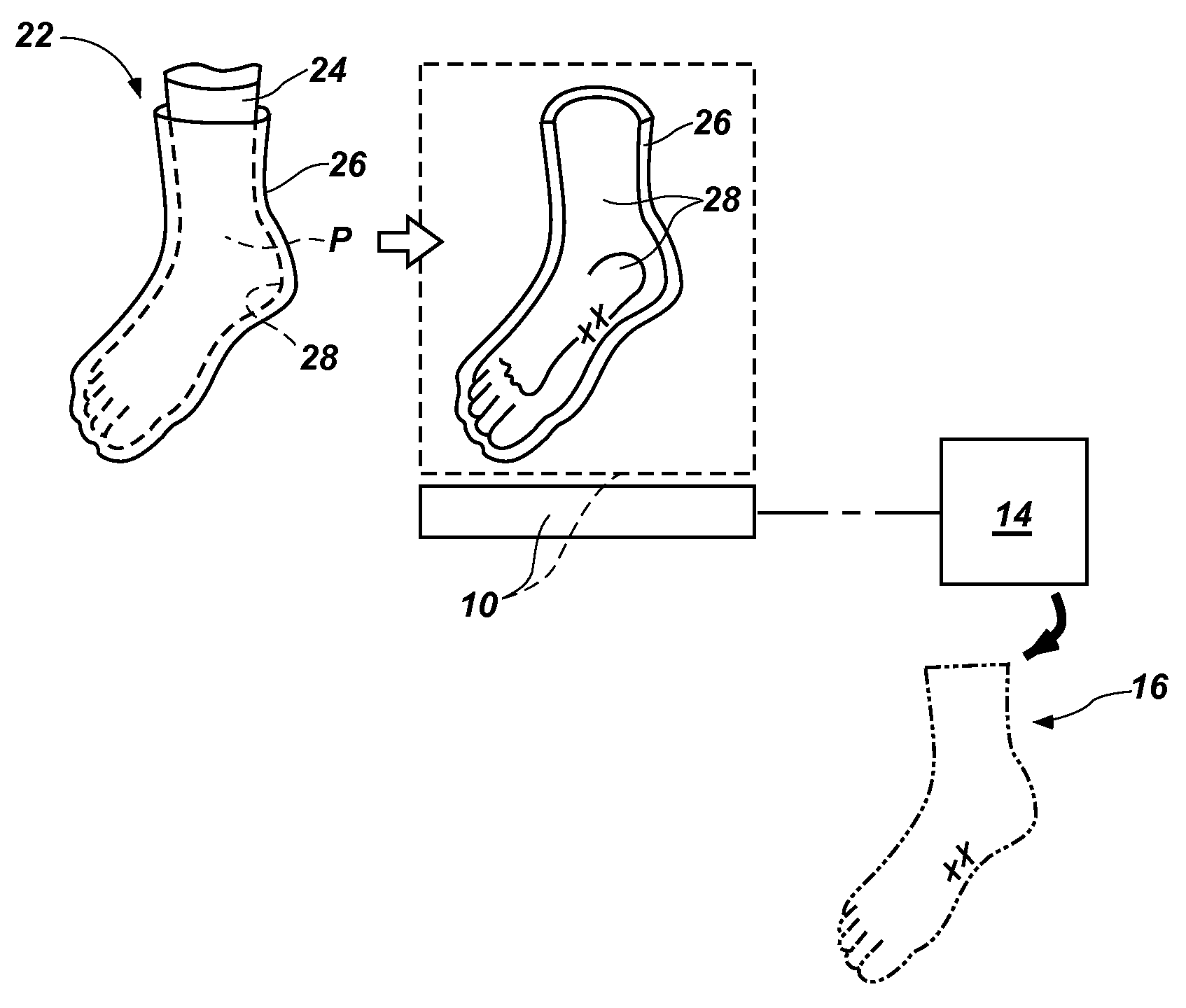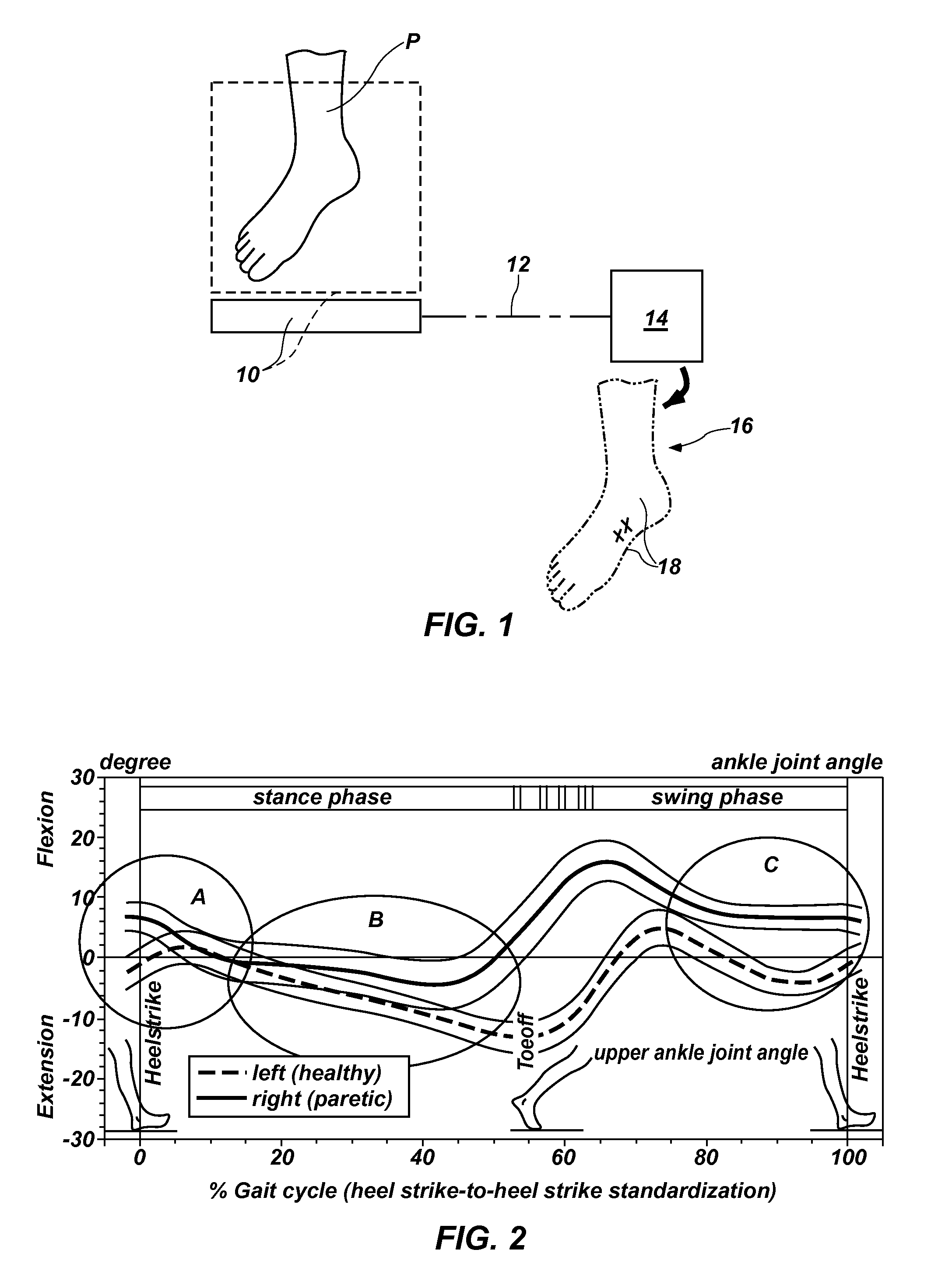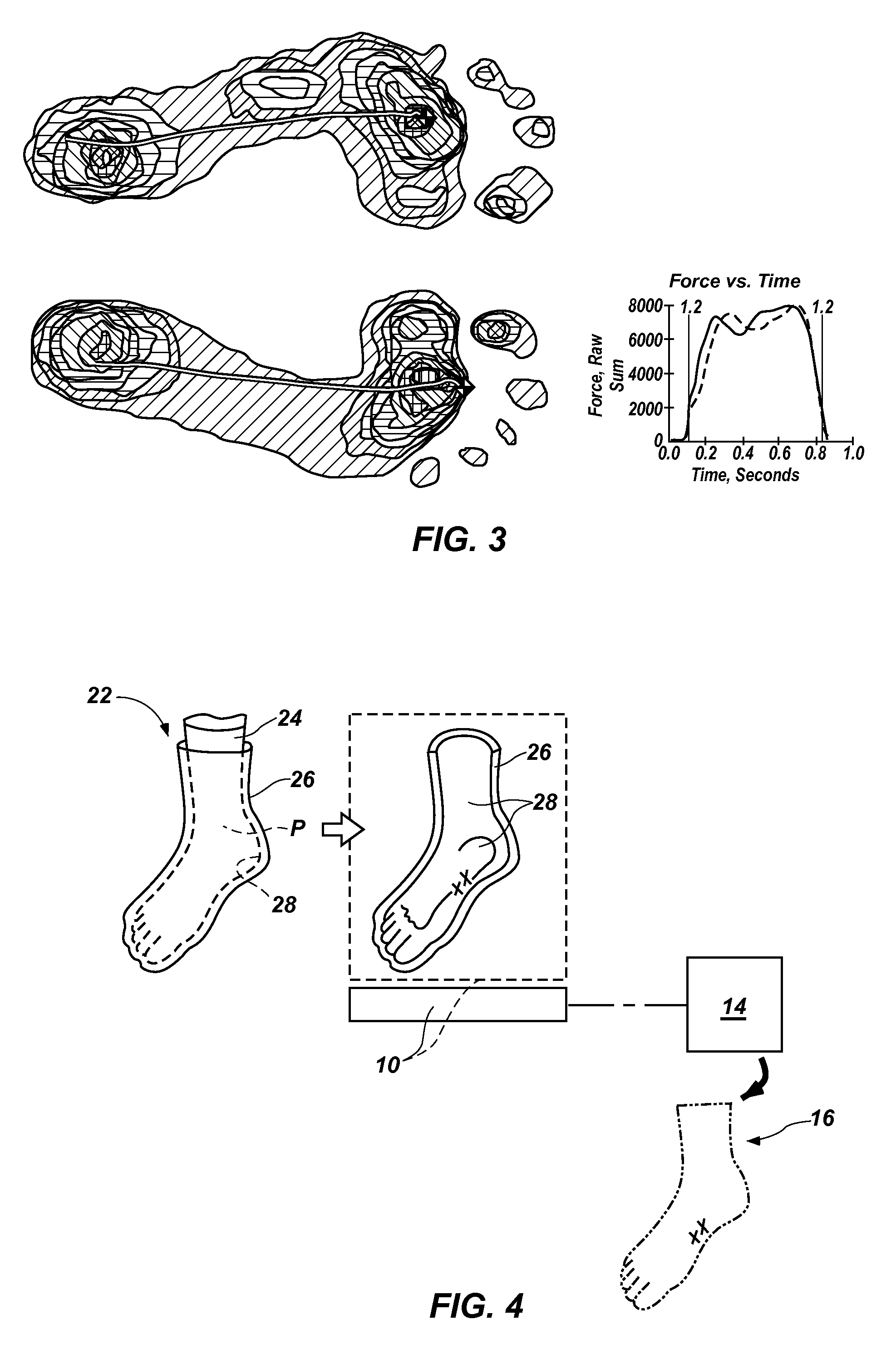Use of additive manufacturing processes in the manufacture of custom wearable and/or implantable medical devices
a technology of medical devices and additive manufacturing, which is applied in the direction of prosthesis, program control, instruments, etc., can solve the problems of insufficient flexibility, inability to meet the needs of patients, and inability to wear externally worn prostheses, etc., to achieve the effect of enhancing flexibility, reducing labor intensity and increasing freedom of movemen
- Summary
- Abstract
- Description
- Claims
- Application Information
AI Technical Summary
Benefits of technology
Problems solved by technology
Method used
Image
Examples
Embodiment Construction
[0037]In various embodiments, processes for making custom orthoses are disclosed and depicted. Although the disclosed embodiments relate to the manufacture of a custom foot bed for an ankle brace, processes that incorporate teachings of this disclosure may also be used to fabricate features of other types of orthoses, prostheses or other wearable and / or implantable medical devices that are custom-made for use with a body part of a particular individual, and in processes for making entire wearable and / or implantable medical devices. Accordingly, in addition to referring to orthoses, the term “custom orthosis,” as used herein, may also apply to prostheses and to other wearable and / or implantable medical devices.
[0038]With reference to FIG. 1, an embodiment of a method for obtaining a model of a body part P is illustrated. While FIG. 1 depicts the body part P as being the sole of an individual's foot, this disclosure is applicable to a wide variety of body parts, including, without lim...
PUM
| Property | Measurement | Unit |
|---|---|---|
| thickness | aaaaa | aaaaa |
| time | aaaaa | aaaaa |
| time | aaaaa | aaaaa |
Abstract
Description
Claims
Application Information
 Login to View More
Login to View More - R&D
- Intellectual Property
- Life Sciences
- Materials
- Tech Scout
- Unparalleled Data Quality
- Higher Quality Content
- 60% Fewer Hallucinations
Browse by: Latest US Patents, China's latest patents, Technical Efficacy Thesaurus, Application Domain, Technology Topic, Popular Technical Reports.
© 2025 PatSnap. All rights reserved.Legal|Privacy policy|Modern Slavery Act Transparency Statement|Sitemap|About US| Contact US: help@patsnap.com



